Dining Room Raised Panel Wainscoting
There are a variety of different types of wainscoting styles. Today's post will explain the differences of each along with which rooms they should be used.
What Are Wainscoting Panels?
Wainscoting panels are each individual boards used when installed to the wall. The idea originated as a way to protect walls from the elements. The name wainscoting stemmed from the type of oak, Wainscot, that was used originally for the panels. Eventually, other woods and materials became available for the paneling and now there are a variety of materials paneling is made from including MDF and vinyl. They are manufactured in sheets instead of boards making installation easier.
What are the Different Types of Wainscoting?
There are five main types of wainscoting panels: Raised Panel, Flat Panel, Beadboard, Overlay, and Board and Batten.
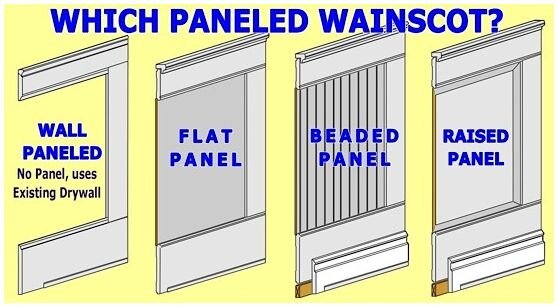
Raised Panel
Raised panel means that the inside panel is flush with the outside trim pieces and has a beveled edge to create the raised panel. I think it's easier to visually see the difference rather than explaining it.
This is the oldest form of wainscoting and began as a means of insulation. It's typically installed 30-40" high around the entire room, though it can go higher. It's most commonly used in dining rooms and living rooms.
Flat Panel
Flat panel is the opposite of a raised panel and means just as you would think. The panels are flat and installed behind the moulding and trim so it appears flat.
Beadboard
Beadboard is comprised of thin rails that are connected oftentimes with tongue and groove. They make beadboard now out of many materials including MDF sheets. Lots of times you'll see beadboard in bathrooms. Check out this post to learn more about beadboard and how to install it for a budget-friendly update.
Overlay
Overlay is when flat panels are installed and then additional panels are installed on top of them giving the look of a raised panel. This is a combination of styles using both flat and raised.
Board and Batten
Board and batten is essentially vertical boards mounted on either drywall or a flat panel used to cover seams. The vertical boards are called battens.
What is the Difference Between Wainscoting and Beadboard?
Beadboard is a type of wainscoting style where thin boards are used along a wall with moulding detail. While it was once individual thin boards used to create the bead board pattern, now they manufacture large sheets that give the illusion of thin individual boards, making install much easier.
Shiplap is another type of wainscoting that uses boards, either horizontally or vertically, usually across the entire wall, not just a ⅓ of the way up. This blog post goes in detail about the different kinds of shiplap and the best one to use.
As I stated earlier, there are a variety of materials now to make wainscoting.
Wood is the original form, and the most authentic and customizable. You can paint it, stain it, and achieve just about any look you are going for using wood.
However, wood needs to acclimate to your climate and your home, otherwise it can cause problems down the road. Wood can shrink and expand with changing temperatures and if the right wood isn't selected, you may see gaps or cracking in your wainscoting.
Vinyl Wainscoting Panels
Vinyl wainscoting is a newer alternative to wood and therefore can be more expensive. It's waterproof and easy to clean so you can see why people may opt for it over wood! It's a great option for bathrooms because it resists mold and mildew, but can absolutely be installed anywhere in the home.
Vinyl usually comes pre-finished in white and can be painted to any look you desire.
What Rooms Should Have Wainscoting?
Wainscoting can be used in any room in your home to add character and interest. Let's take a look at some examples of spaces that use wainscoting for a truly beautiful result.
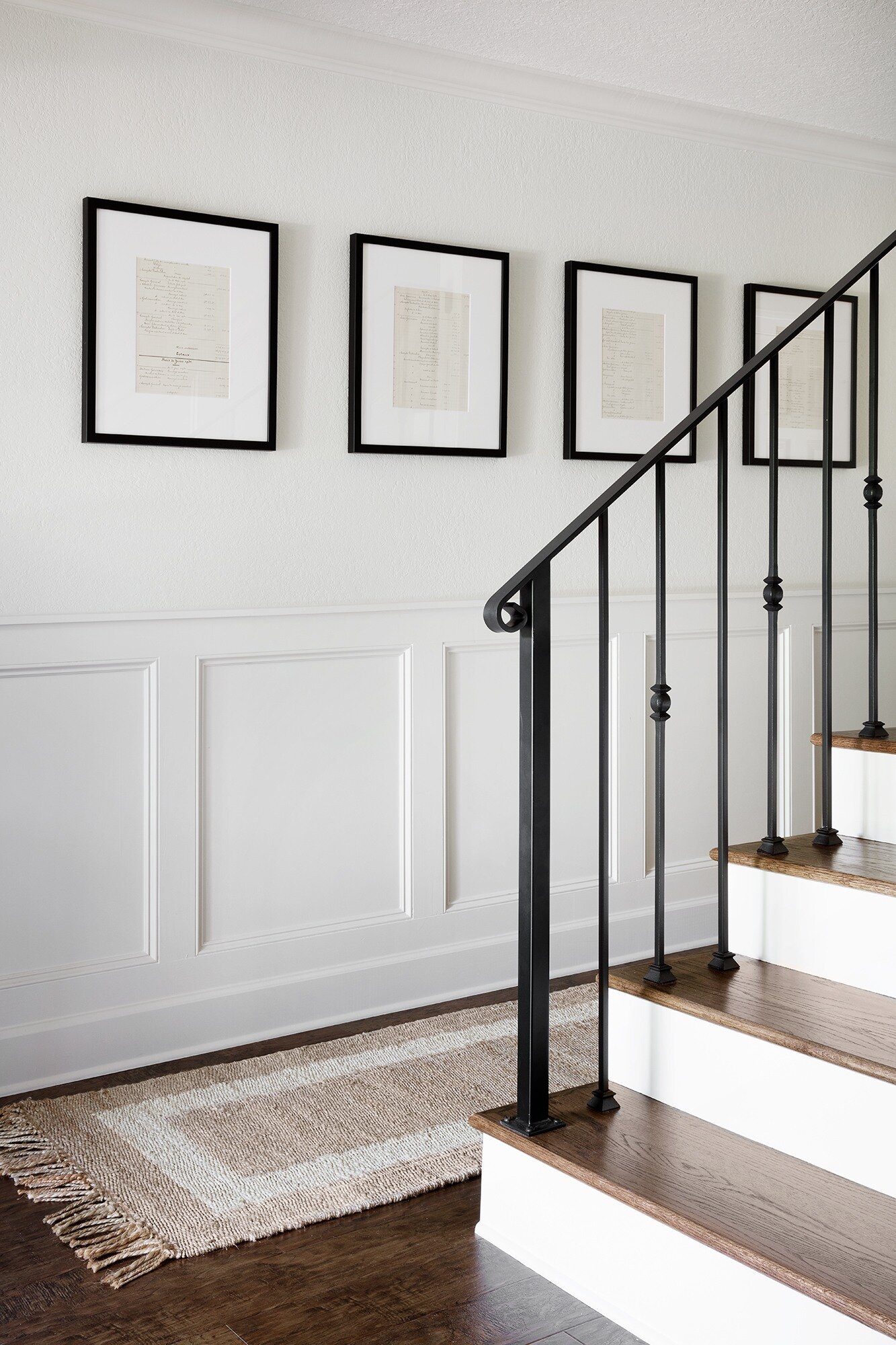
via Magnolia
In this hallway they used a flat panel wainscoting with baseboard moulding and chair rail on top. A hallway is not usually a feature room but here it adds character and charm when you first walk in the front door. Painting it the same color as the wall gives it a softness.
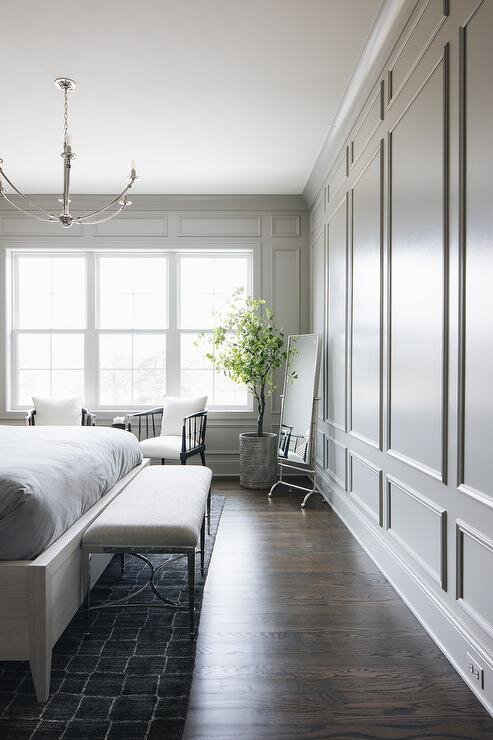
via Timber Trails
A bedroom gets a dramatic feature with floor to ceiling wainscoting panels. I love the choice of going all the way to the ceiling here for a bold look that makes the ceilings look even taller. Most often we see wainscoting go only a portion of the way up, but here it really makes a statement.
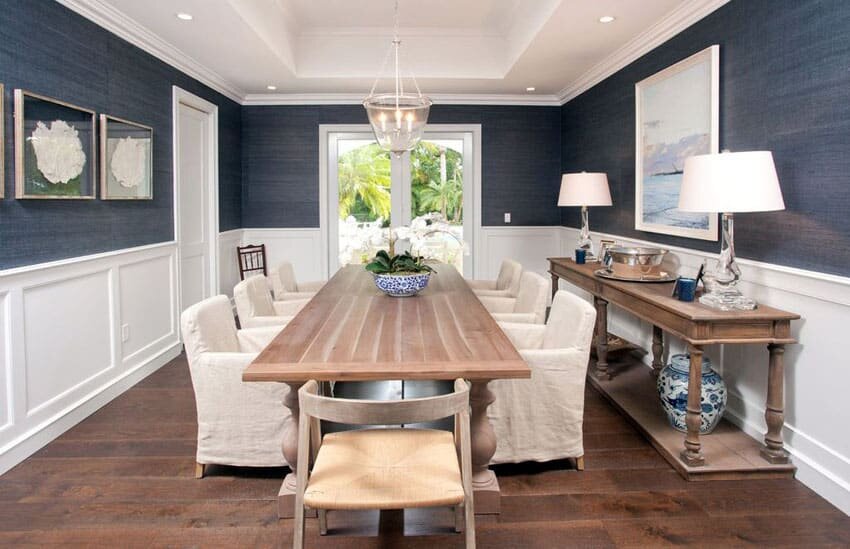
via Decor Home Ideas
The dining room is a very traditional room we see with wainscoting. Here it is shown about 40" high on the wall painted a crisp white. Then on the upper half of the wall they used a grasscloth wallpaper for added texture and color. Wallpaper is one of my favorite combinations used with wainscoting because since it's cutting the amount of paper needed by not wallpapering the entire wall, it not only saves on costs but it also helps it feel more balanced and less overwhelming. The room would feel much too dark if all walls were wallpapered the navy. Same goes if the wallpaper was a bold print. It would be too overwhelming for the entire room.
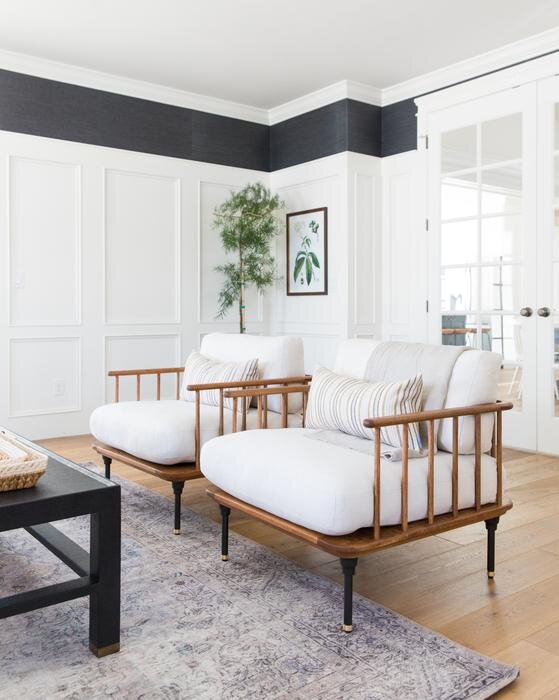
via Studio McGee
This living room gets a modern take on wainscoting. It goes ¾ up the wall with clean boards without a ton of beveling. It feels less formal and traditional with simple board rails and trim. Even each vertical board is wider than we've previously seen giving it a new look.
There are endless options when it comes to the types of wainscoting styles and rooms! You can get creative and come up with your own unique twist. Everything from the paneling size, to the moulding details, and of course the height and color all play a role in what it looks like overall. You can use wainscoting in any room or space to give it added character and charm.
Installing wainscoting can be reasonably priced and even a weekend DIY project if you're handy with a table saw and nail guns.
This DIY post shares how we installed beadboard in our bathroom on a budget.
Dining Room Raised Panel Wainscoting
Source: https://amandakatherine.com/blog/5-different-types-of-of-wainscoting-styles/

0 Komentar